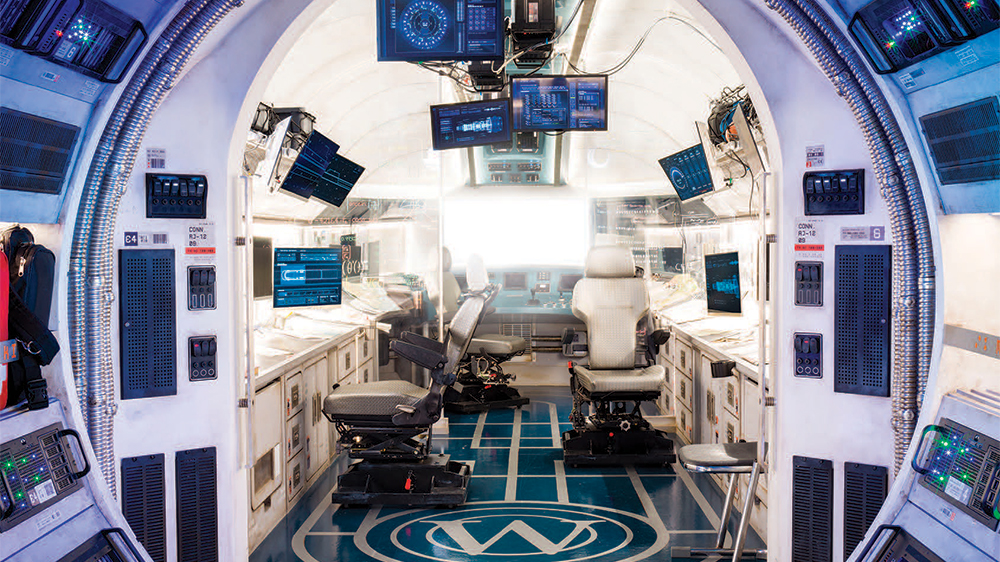How the ‘Snowpiercer’ VFX and Design Teams Collaborated to Create the TNT Show’s Centerpiece Train
By Valentina I. Valentini
LOS ANGELES (Variety.com) – In the title sequence of the new TNT series “Snowpiercer” there’s a montage of train blueprints. Though the show stars Oscar winner Jennifer Connolly and Tony Award winner Daveed Diggs along with an A-list ensemble cast, it’s clear that the more than 1,000-car locomotive — Snowpiercer itself — is the center of attention.
The series is a spinoff of Bong Joon Ho’s 2013 film of the same name that put the South Korean filmmaker on the map. And though the Oscar-winning “Parasite” director acted as executive producer and occasionally consulted, it was showrunner Graeme Manson (“Orphan Black”) who led the project. The sci-fi drama starts seven years after the world has frozen over; only a few thousand survive, continuously circumnavigating the globe aboard the giant caravan.
“[We needed] to create a realistic train, moving in a realistic world,” says VFX supervisor Geoff Scott, who’d worked on “Orphan Black” with Manson and was a fan of the graphic novel on which Bong’s movie was based.
As Scott began to visually build out his ideas with Manson and series lead director James Hawes, he kept returning to a style called Dieselpunk, a retro technology-focused look popular in 1920s-’50s speculative fiction and a personal favorite of the VFX chief. The exteriors for Snowpiercer, which was created entirely in CG, were heavily influenced by The Mercury, a New York Central train that was in service from the 1930s until the 1950s.
When Scott moved to White Rock, near the Number 18 Production studios in Vancouver where “Snowpiercer” is filmed, he found the trains constantly running through the city. He observed them standing by the tracks, which he says allowed him to better understand the motion and mechanical aspects.
Though in the story Snowpiercer is 10 miles long, with 1,001 cars, production designer Barry Robison and his art department built 18 cars on four stages, including the engine; a hydroponic gardening car; first- , second- and third-class dining cars; a sushi restaurant with an undersea element; and the “chains” car, which resembles an Asian night market.
“I received a strong directive from the beginning,” says Robison. “They didn’t want a carbon copy of the movie but rather a new identity for the series. So I went back to the graphic novel, which is well-known for its detailed illustrations and storyline, and [what that showed] me was how robust and strong the visuals needed to be.”
For the interiors, Robison looked to Japan and China for clues as to where locomotive design technology is headed. He and art director Tom Wilkins also contacted Canadian railway companies, which offered insights and solutions for the problems of a vehicle moving through hostile environments like the one Snowpiercer travels through — notably information about snowplows, debris diverters and warming elements to keep the train moving.
“The biggest challenge,” notes VFX supervisor Scott, “is transporting people into a place where they don’t get taken out of [the show]. And we had some very talented people to create that magic.”

